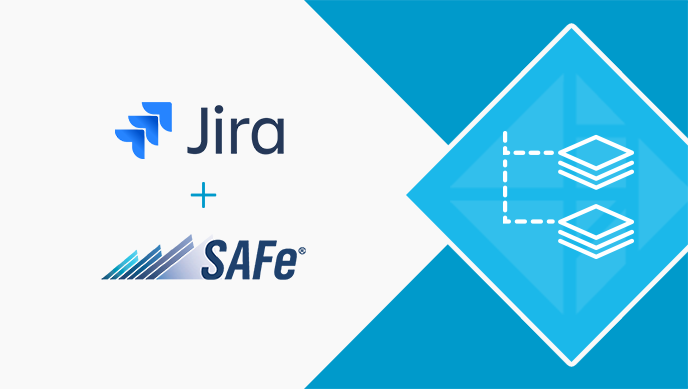Pretty much every organization on the planet is going through some sort of transformation, whether it’s digital, cultural, or agile. Clients (and non-clients) come to us for direction in steering these changes because they understand that what got them to where they are today won’t get them to where they want to be. They want real-life examples from people on the ground of how to manage their transformations. We’re working in a new era of commercial enterprise, where low barriers to entry mean near-limitless competition from traditional and non-traditional businesses. Customers are more particular than ever before, and there’s continuous competition between companies to hire the best-of-the-best talent.
This landscape demands a departure from conventional service delivery models (waterfall) in favor of more nimble practices that are welcoming of change – in people, practices, and tools – and innovation. Simply put, agile at scale means breaking up large projects into smaller pieces, so you can release to the market faster, run experiments, get customer feedback, and end up delivering something the market wants rather than waiting to ship one big risky item.
That’s why today, we wanted to investigate the dos and don’ts of scaling agile, and how Valiantys can help organizations find their agile foundation.
So what are scaling enterprises getting right – and getting wrong – in their agile journeys? There’s no one path to victory, but we have a few commonly applicable best (and worst) practices to share.
3 do’s of Scaling Agile
1 – Realize that agile at scale is a journey, not a destination.
It’s not a certificate that you receive and then you’re done. There’s no finish line – just a lot of breakthroughs along the way.
2 – Determine who you’re solving for – ideally, it will be the customer.
Agile at scale is about working across the organization to satisfy your customers (whether internal or external), with the right thing at the right time, in the quickest way possible.
3 – Work with other teams.
If all you do is optimize the way your own team works, you won’t be successful. You may have to compromise to benefit the whole system. Find a way to work laterally across the organization with shared goals, shared outcomes, and shared backlogs, finding ways to experiment and experience success together.
These points all boil down to unlearning the old ways of working. Most organizations want to buy and implement the answer, but if they don’t allow themselves to shed those old habits and routines, they won’t have the time or freedom to practice new ones. The whole rationale of agile at scale is embracing inherent uncertainty and harnessing change to benefit the customer. If you have inherent uncertainty in what you’re doing, how you’re doing it, and who you’re doing it for, agile at scale lets you experiment and learn a lot quicker than in the traditional big bang launch.
3 don’ts of Scaling Agile
1 – A training course is not the answer.
We hear the story all too often: a senior leader sends 1,000 people to an agile course and nothing changes! Remember that your organization’s people and environment need to be harmonious. If you send employees to a training course on how to be agile, but don’t foster an environment promoting agility, you’ve probably disengaged them more and made your journey more difficult.
2 – Senior leaders think agile is something other people do; they’re wrong.
The best results we have seen are when senior leaders within an organization step up to the plate and model the agile mindset.
3 – Avoid the agile compliance regime.
Sometimes, when leaders decide that agile is the answer, they create a checklist to “make everyone agile” – do a morning standup, implement a sprint cadence – and while these exercises may look agile on the surface, they mean nothing without a deeper understanding of the agile spirit, philosophy, and intent. Don’t measure your agility based on routines, but rather the outcomes. For example, are teams delivering potentially shippable product increments each sprint? Has NPS gone up as expected after the new feature release? Etc.
You’re going to struggle if you expect to get it right the first time. A stumble doesn’t mean you should stop; it means you should continue. Give people the time and freedom to turn agile at scale into a real muscle for the organization and you’ll be victorious.
What value does Valiantys offer your Agile Transformation?
Simply put, we’re scaling agile ourselves. We’re living and breathing it every day, and we’re happy to share our experiences about what’s working and what isn’t. We’re also listening to hundreds of organizations going through this experience right now and sharing what’s working.
At Valiantys, we don’t just think about our tools, but the mechanisms of working together well. We provide you with best-in-class software to enable you to think about and implement agile at scale, but tools will only take you so far. We’re also here to impart the human-to-human ways of working to amplify the power of those tools.
And we know it’s a challenge – but believe it’s worth it. While agile at scale can feel like quite a scary thing to embrace, it’s incredibly valuable once you start on that journey.
For more information on Scaling Agile in your organization, read our Agile Ebook now



